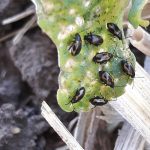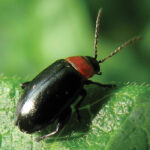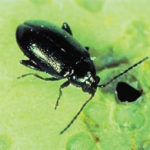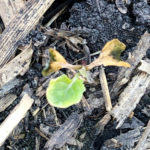
Tag Archives flea beetles

They’re baack: Canola council urges vigilance with flea beetles
The annual fight with flea beetle pressure is about to begin

VIDEO: Beating back flea beetle pressure
This insect foe need not get the upper hand in your canola crop

Manitoba farmers get flea beetle reprieve
Faster plant establishment has helped canola get ahead of the pests

Grasshopper populations on the rise
Lessons from organic farms reveal a broader approach to grasshopper management
![“[Flea beetle] seem to overwinter well under our Prairie conditions and we don’t have the natural enemies that seem to knock a population out, the way it does to other insects.” – John Gavloski.](https://static.manitobacooperator.ca/wp-content/uploads/2023/02/09102252/Flea-beetles_Brent-Schram_cmyk-150x150.jpeg)
The year in pest insects on Manitoba fields
There were many of the usual suspects and some strange new issues in Manitoba fields last season

What’s the future of flea beetle management in canola?
Producers are looking for answers, but experts say there aren’t many new solutions

Flea beetles meet the flood
Is there reason to be optimistic about flea beetles this year?

Targeting your crop enemies
Is the future of crop protection environmentally friendly biotechnology?

Late-season flea beetles no cause for alarm
They may be more evident this year as a dry August forces them higher into the canopy
insects Flea beetles may be more evident this yearas a dry August forces them higher into the canopy
Some Manitoba farmers have been spraying for flea beetles a little later than they’re used to, but experts say this year’s jump in late-summer flea beetle sightings shouldn’t automatically sound the alarm. “Canola can handle a fair amount of flea beetles late in the season,” according to an Aug. 19 crop pest report from the
MASC records more than 480 reseeding claims so far
Flea beetles, wind, crusted soil and frost have been the main perils


